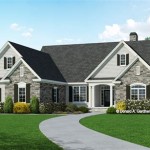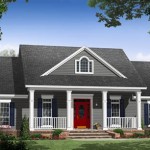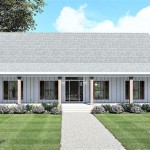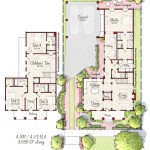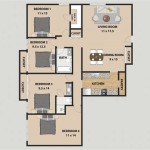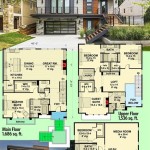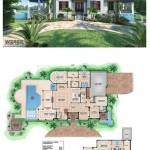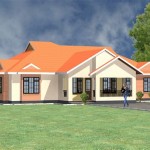Modern Country House Plans for Cold Climates
Modern country house plans designed for cold climates prioritize energy efficiency, durability, and comfort while embracing the aesthetic of contemporary farmhouse style. These plans incorporate specific features and design elements to combat harsh winters, maximize warmth, and minimize energy consumption. Understanding these key considerations is crucial for building a beautiful and functional home in a cold climate.
Prioritizing Energy Efficiency: A well-insulated building envelope is paramount in cold climates. This includes using high R-value insulation in walls, roofs, and floors. Advanced framing techniques like staggered studs can further enhance insulation performance by minimizing thermal bridging. High-performance windows with multiple panes and low-E coatings help retain heat and reduce drafts. Air sealing is critical to prevent air leakage and maintain consistent indoor temperatures.
Roof Design and Snow Load: Steeply pitched roofs are a prominent feature in cold climate house plans. This design helps shed snow and ice, preventing excessive weight accumulation that could damage the roof structure. The roof design should be engineered to handle the specific snow load requirements of the region. Durable roofing materials such as metal roofing or asphalt shingles with a high wind rating are preferred for their resistance to harsh weather conditions.
Orientation and Sun Exposure: Properly orienting the house to maximize solar gain during winter months is a crucial passive heating strategy. Large south-facing windows can capture sunlight and warm interior spaces naturally, reducing reliance on heating systems. Overhangs or eaves can be strategically designed to shade these windows during summer months to prevent overheating.
Foundation Considerations: Cold climates often experience frost heave, which can cause the ground to expand and contract, potentially damaging the foundation. A well-designed foundation system is essential to mitigate these risks. Options include a full basement with proper insulation, a frost-protected shallow foundation, or a slab-on-grade foundation with adequate insulation around the perimeter.
Heating Systems and Ventilation: Efficient heating systems are fundamental in cold climates. High-efficiency furnaces, heat pumps, or geothermal systems provide reliable and cost-effective heating options. Radiant floor heating offers even heat distribution and can be a comfortable and energy-efficient choice. Proper ventilation systems are also essential to maintain indoor air quality and prevent moisture buildup, which can lead to mold and mildew growth.
Material Choices for Durability: Exterior materials should be chosen for their durability and resistance to extreme temperatures, moisture, and freeze-thaw cycles. Durable siding options include fiber cement, brick, stone, and engineered wood siding. These materials offer long-lasting performance and minimal maintenance requirements.
Outdoor Living Spaces: While cold climates may limit outdoor activities during winter, incorporating sheltered outdoor spaces can extend the usable season. Covered porches, patios, or three-season rooms provide opportunities for enjoying the outdoors even during cooler weather. These spaces can be designed with features such as fireplaces or outdoor heaters to provide warmth and comfort.
Mudrooms and Entryways: A functional mudroom or entryway is particularly valuable in cold climates. These spaces provide a designated area for removing and storing winter gear such as coats, boots, and gloves, preventing the tracking of snow and dirt into the main living areas. Built-in storage solutions, benches, and durable flooring are key elements of a well-designed mudroom.
Window Placement and Size: Strategically placed windows can maximize natural light and views while minimizing heat loss. While south-facing windows are ideal for passive solar gain, windows on other sides of the house should be carefully sized and placed to balance natural light with energy efficiency. Double or triple-paned windows with low-E coatings are essential for minimizing heat transfer and preventing condensation.
Fireplaces and Wood Stoves: Fireplaces and wood stoves can provide supplemental heat and create a cozy atmosphere in cold climates. Efficiently designed wood stoves can significantly reduce heating costs. Fireplaces can add architectural interest and serve as a focal point in living spaces. Proper venting and installation are crucial for safety and optimal performance.
Garage Considerations: An attached garage provides convenient access to vehicles and protects them from harsh weather conditions. Insulating the garage can further minimize heat loss from the house. Consider incorporating a heated garage option for added comfort and to prevent freezing pipes within the garage during extremely cold temperatures.
Landscaping and Site Planning: Strategic landscaping can contribute to energy efficiency and protect the house from winter winds. Planting evergreen trees or shrubs on the north and west sides of the house can create a windbreak, reducing heat loss. Deciduous trees strategically placed on the south side can provide shade during the summer while allowing sunlight to reach the house during the winter.
By carefully considering these design elements and working with experienced architects and builders, homeowners can create modern country houses that are both beautiful and functional, perfectly adapted to the challenges of cold climates. These homes offer comfortable, energy-efficient living while embracing the timeless appeal of farmhouse architecture.

Mountain Homes Big Design For Majestic Places

Passive House Design Comes Of Age Greenbuildingadvisor

Image Result For Building Cold Climate Architecture House Contemporary Exterior Designs

Green Building In Cold Climates Inhabitat Interview With Bernat And Kate Of Maison Durable Portneuf

Cold Climate Collaboration Prefab Homes Modern Energy Efficient House Plans

Houzz Tour Innovative Home Heated And Cooled By Design
Net Zero House For A Cold Climate Jlc

21 Sustainable House Design Ideas Fontan Architecture

The Best 2 Bedroom Tiny House Plans Houseplans Blog Com

Cold Weather Safety For Painters Cozy House Modern Plans

